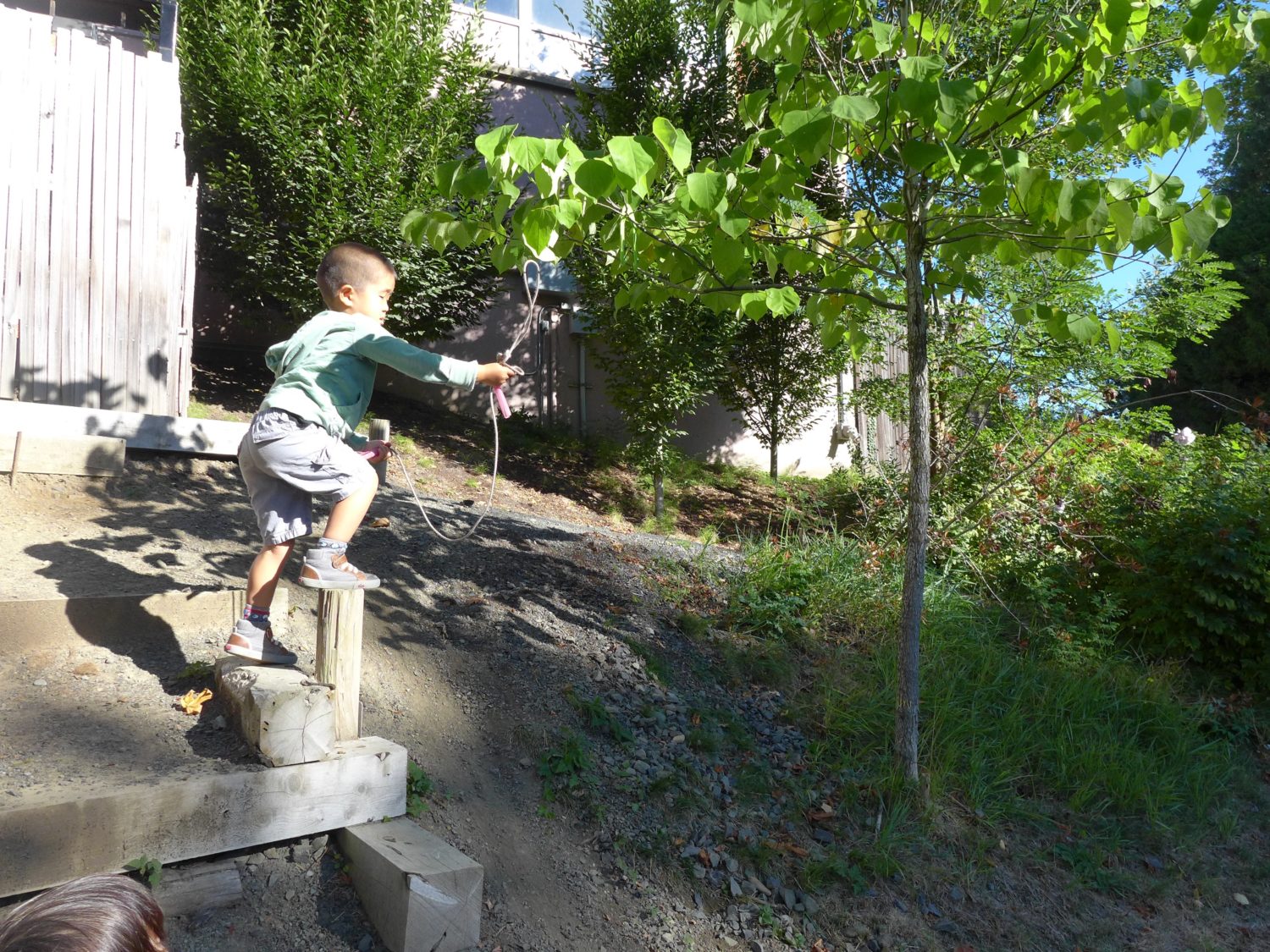Casting a line toward invention

As Susan wrote in her recent post, Opal School staff gathered Wednesday to discuss their observations of times when children were being inventive. I was in a group with Caroline Wolfe, who described her observations with our youngest learners in Cedar classroom.
At a fundamental level, she explained, the children in Cedar are inventing what it means to be a community. For most of the class, these last weeks have been their first experiences with a group of people who are not their family: this is their first month in a school setting. Their invention is happening both at a community level – what kind of a community will we construct? how will this community function? what problems can we solve? – and at an individual level – who am I? The invention happening here may be of something that already exists in the world – each year, we build classroom communities that have both essential commonalities as well as specific differences – but the strategies and tools they are creating are unknown to the children who are constructing them.
Caroline talked about the importance of attending to the construction of identity during the trial and error they’re immersed in as they go through this process. How can we make sure to be creating the conditions where they’ll see themselves based on their intentions (I’m a helper!) instead of a diminished interpretation of their miscues (I’m naughty.) Indeed, continuing to see yourself as a problem-solver seems essential to maintaining the agency necessary to invent.
Caroline also described another moment she saw as related to invention, when a horseshoe landed in a tree. One child shook the tree. The next used a rope to create a lasso to try to get it down. I wondered if invention might be what comes next – after the strategies that they know are ineffective.
These conversations, considering incidents where children are “doing” invention without having been asked to do so, opens first doors to considering invention education in early childhood and elementary schools. Some conditions that provoke invention that occur to me, based on both Susan’s post and Caroline’s stories:
- Children need to encounter problems that they care about solving. These children need to find a way to work together; they want to get that horseshoe down from the tree. Removing problems – being the lawnmower – is an obstacle to invention. Invention depends on courage, risktaking, and imagination.
- They need to be involved in constructing the pathway to solving the problem – and any tools that they have at hand must be incomplete. The process, then, is going to be inefficient and filled with uncertainty. We short-circuit invention when we do things for children rather than have them figure it out.
There seems to be significant overlap between the work we’ve been doing regarding a pedagogy of play and invention education. In a phone call this week, our colleague Ben Mardell said, “Saying no to play is saying no to the possibility of invention.” As we continue to investigate this question at Opal School, we look forward to being informed by your practice. We’d love to hear from you:
- When do you see the children you work with being naturally inventive?
- What conditions seem to support children’s invention?
- What do you see as the relationship between play and invention?

I’m so excited to be thinking about these questions with our community of very young learners. I’m especially interested in how play and invention intersect, as much of our days together as a classroom community are spent engaged in play. I also wonder about the conditions I can support, and how to create or hold space for opportunities to invent to occur.
I look forward to watching this work develop throughout the year. And to see what gets discovered about the relationship between play and invention. I am very intrigued by your list of “conditions that provoke invention” – they are such wonderful observations that I didn’t initially suspect but they make perfect sense. Especially drawn to your observation that 1. Removing problems is an obstacle to invention and 2. Tools must be incomplete to solve the problem.
Is “invention education” a working term developed by Opal? Such as playful inquiry? Or does it have another source?
It also makes me wonder, at what point does an invention occur? At the spark? Does it have to be proven? Or simply hypothesized?